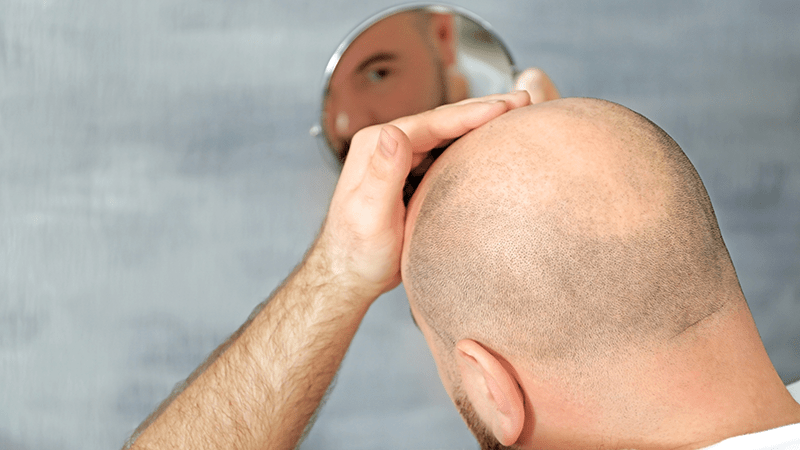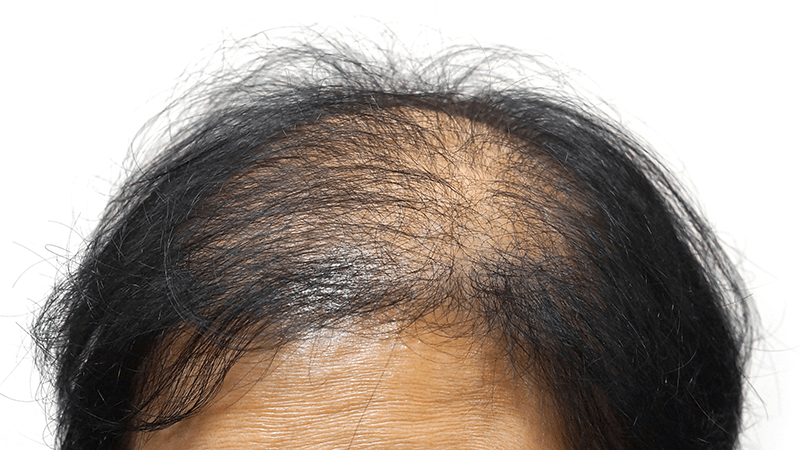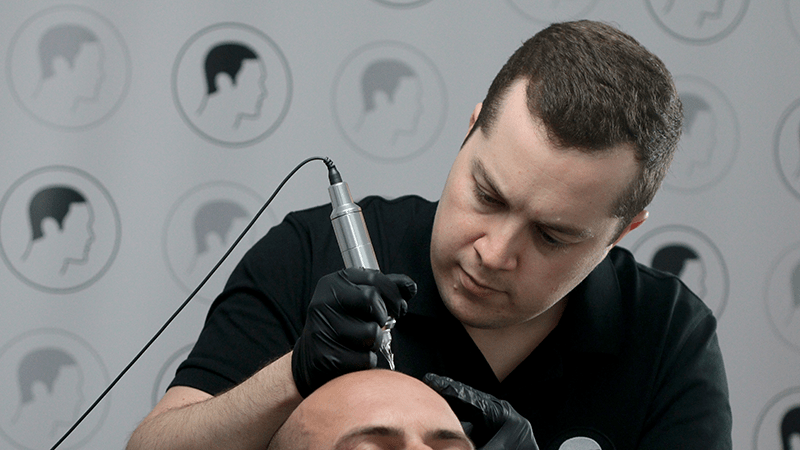Alopecia androgenetica is a common type of hair loss. It is also known as androgenetic alopecia. Here you can find out more about alopecia androgenetica and what you can do if you are affected by it.
Causes of alopecia androgenetica
Alopecia androgenetica is hormone-related. The hair loss is caused by the male sex hormones, which are called androgens. With androgenetic alopecia, your hair follicles have a heightened sensitivity to these hormones, causing your hair to become thinner and gradually fall out. As you age, your hormone levels change and the hair loss gets worse. Your scalp becomes increasingly visible and your hair loss is obvious to other people. For many sufferers, this is very distressing. Hair loss often has a serious impact on wellbeing and confidence.
Alopecia androgenetica in men and women
Alopecia androgenetica is the most common type of alopecia in both genders, but the symptoms and progression of the condition are different in men and women:
Androgenetic alopecia in men
Around 80 percent of all men have a genetic predisposition to alopecia androgenetica. And around half of them go on to experience thinning hair, a receding hairline or baldness. Alopecia androgenetica does not usually progress in a continuous way. It affects people in two or more phases between the ages of about 20 and 50. In some people, alopecia can even begin in puberty.
- In men, androgenetic alopecia begins with hair loss around the temples.
- Sometimes it progresses no further than a receding hairline, but sometimes the hair on the top of the head starts to fall out too. This creates bald patches which gradually get bigger.
- With progressive hair loss, the bald patches may merge until only a ring of hair remains.
- The ring of remaining hair may get slightly thinner over the years, but it doesn’t usually fall out completely.
Androgenetic alopecia in women
Around 40 percent of all women are genetically predisposed to androgenetic alopecia. In many cases, it emerges during the teenage years or the menopause due to hormonal changes. But hair loss caused by alopecia androgenetica can occur at other stages of life too. In women, alopecia androgenetica is similar to diffuse hair loss.
- Unlike with alopecia androgenetica in men, women usually experience thinning hair on the top of the head first.
- The hair gets thinner and sparser – most of the time it’s on the crown of the head that this first becomes obvious.
- The hair loss may continue to spread, but women tend not to go completely bald.
Treatment for alopecia: your options
There are no everyday preventive measures you can take against alopecia androgenetica. The way you care for your hair has no effect on hair loss. There are some medicinal products which promise to combat hair loss caused by alopecia androgenetica. These include special treatments, pills and tinctures. But these products are only effective while you are taking them. As soon as you stop taking them, your hair will start falling out again. One other option is a hair transplant. But a transplant cannot restore your hair to its full thickness. It also leaves scars.
Scalp micropigmentation with alopecia androgenetica
Scalp micropigmentation is a very effective and safe option. It can’t cure your alopecia androgenetica, but it can conceal it completely. This gentle treatment involves applying dots of pigment to your scalp. These dots give your hair a completely natural-looking density. With scalp micropigmentation, you can enjoy the appearance of a full head of hair despite your alopecia – and get your confidence and wellbeing back. Scalp micropigmentation is perfect for making hair look thicker, or for creating the illusion of a close-shaven hairstyle.
Find out more about scalp micropigmentation: we’ll be happy to advise you and tell you all about our treatment. The team at Modern Hair Loss Solution® look forward to hearing from you!
We’re happy to help:
Send us your photos now!


